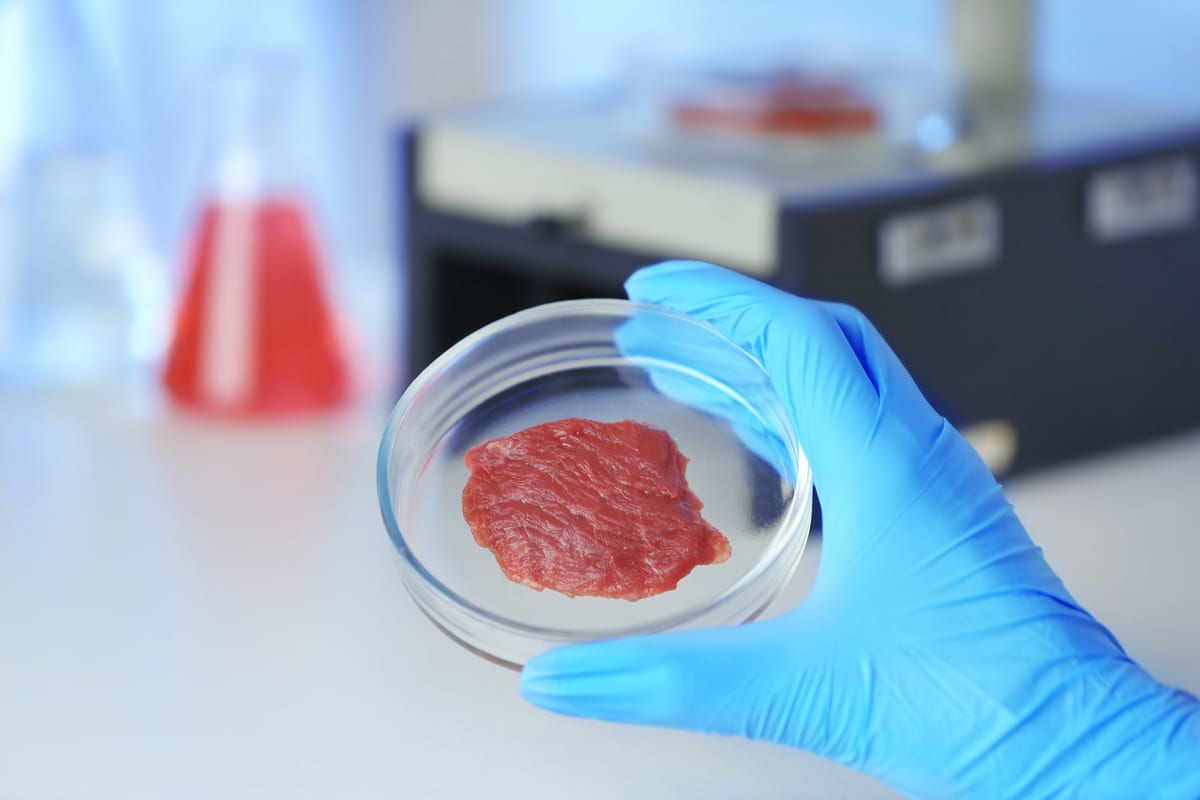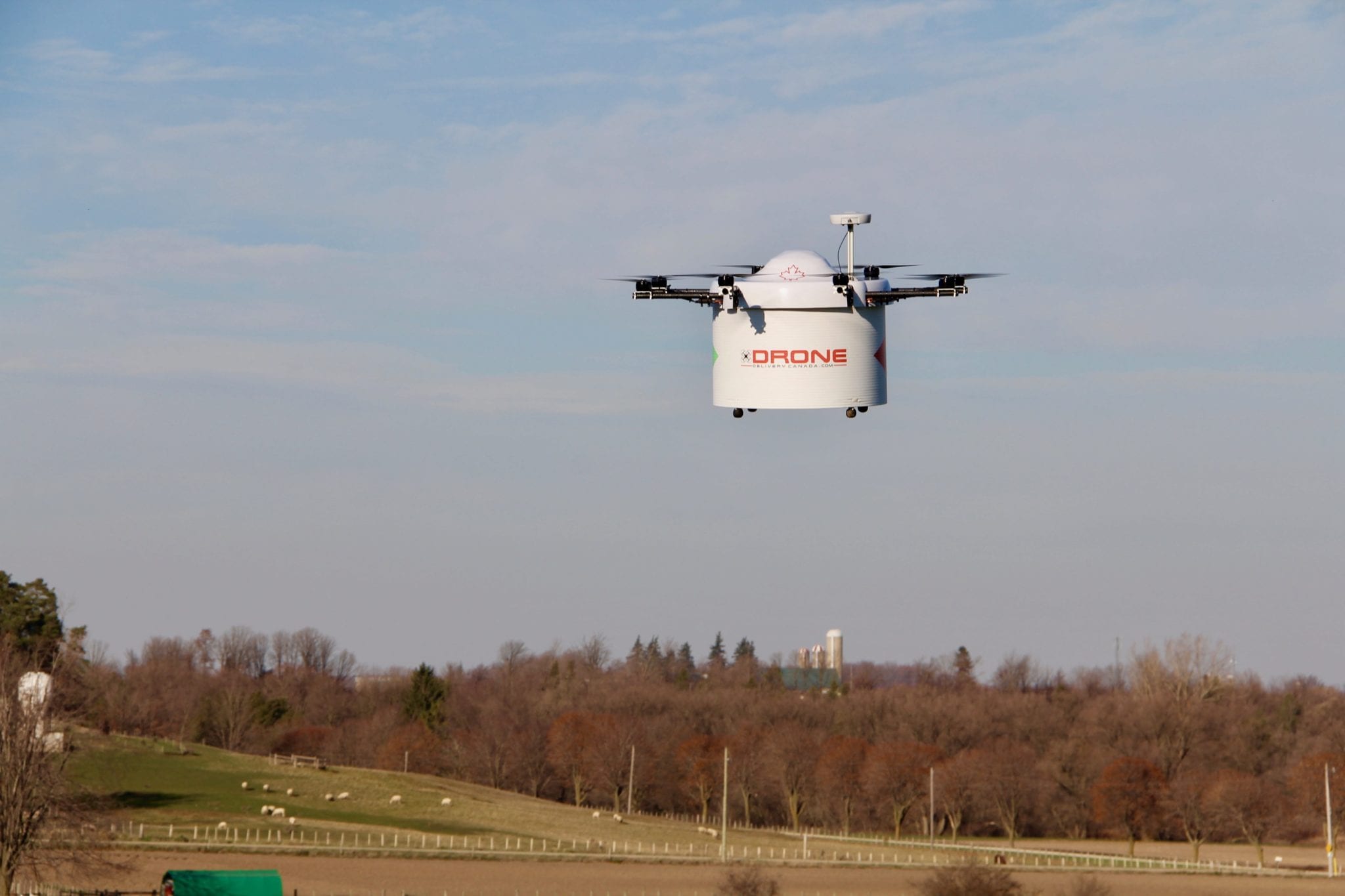Lab-grown Meats Signal Paradigm Shift in the Food Industry
Would you eat a steak that was grown in a laboratory?
That is the trillion dollar question that will decide the future of food production.
It will affect everyone who works on a ranch, a slaughterhouse, a meat processing plant or a packing house.
And while it sounds like far-flung science fiction, it is a question that will face you at the supermarket in a few short years.
THE ‘LAB MEAT’ REVOLUTION
So, ‘Lab Meat’ is not a very appetizing name for a product. It’s right up there with ‘Test Tube Gristle’, or ‘Protein Goo’.
Marketing people will figure that out later. Perhaps your Lab Ham will be called ‘Sham’, and you’ll eat ‘Fakin and Eggs’ in the morning with a side of toast.
But all joking aside, a few startup companies around the world hit a breakthrough moment in the early half of 2017.
‘In vitro’ meats have been around for about five years, but until this year it was so expensive to grow a single hamburger patty that it couldn’t possibly be commercialized.
In 2013 it cost about $325,000 to chemically engineer a single five ounce patty. Add in two patties, special sauce, onions, pickles cheese, and the sesame seed bun, and you’re talking $650,002 for every Big Mac.
But this year breakthroughs in the lab growing technique dropped that cost … even for low production … to just $11.36 for that same burger patty. That makes the same lab-grown Big Mac about 30,000 times cheaper.
It’s not a price point that will replace meat yet … but it’s getting there.
THE CHEMISTRY OF LAB MEAT
Meat is basically muscle tissue from an animal, usually with a certain amount of fat attached. Lab meat is essentially the same thing, but the ‘muscle meat’ is grown using stem cells from the muscle tissue of a cow, chicken, pig, goat, salmon, unicorn, or whatever.

A single chicken cell could produce enough muscle for 20 trillion chicken nuggets, or in other words, a slow day at KFC.
The producer takes a small amount of muscle and fat cells from the critter in question, say in this case a cow. The muscle is separated from the fat, and put into a dish to create a cell culture, along with nutrients like amino acids and carbohydrates.
A single muscle stem cell can grow a trillion more muscle cells, and as they grow the new cells from what are known as Myotubes. These tiny tubes are placed into a ring to create a single strand of muscle tissue. Each of these strands are layered together with others in a circular fashion to form that hamburger patty.
Right now, to be blunt, the lab meat is blander and paler than the real meat. However, it does provide the same nutrients, and researchers are still working on ways to improve the flavour and appearance.
A SHORT HISTORY OF LAB-GROWN MEATS
The idea of growing meat like potted plants in a greenhouse is not new. Sci-fi writers and futurists have been writing about this topic for decades.
Former British Prime Minister Winston Churchill suggested lab grown meats will replace real meat back in 1931, saying “We shall escape the absurdity of growing a whole chicken in order to eat the breast or wing, by growing these parts separately under a suitable medium.”
Scientist Russell Ross grew the first muscle fibers in 1971, namely the heart muscle of a guinea pig!
The first patent for ‘tissue engineered’ meat for human consumption was filed in 1998, and two years later a group of Dutch researchers filed a patent on the process to create cultured meats.
In 2003 two researchers from Harvard Medical School and the Tissue Culture and Art Project showed off a lab grown ‘steak’, grown from the stem cells of a frog. The steak was cooked and eaten … but apparently not enjoyed.
It is in this decade that the momentum for cultured meats has really taken off. The world’s first lab-grown burger was cooked and eaten at a news conference in London in 2013. The burger, developed by scientists at Mastricht University in The Netherlands, cost $332,000.
Since then the race for lab meat dominancy has moved from university research labs to startup companies in Silicon Valley and Israel.
To be clear, lab-grown meats are not yet ready for the market. It’s too expensive, and the taste and appearance are generally (from what we’ve heard) not as good as ‘real’ meat.
But that’s changing, and very quickly.
Now the basic science is down, companies in this space are making rapid progress.
WHERE’S THE BEEF?
Mosa Meat includes the Dutch researchers who grew the first hamburger, and now has two dozen scientists and lab techs working on new processed to bring down the cost while improving the quality.
Their focus is on developing minced meat (basically hamburger) from cattle cells, and the goal is to create a commercially viable product in five years.
That will at first just be burgers, but the Mosa Meat team is also looking at producing steaks, chops and other cuts of meat using 3D printing technology … which is almost weird to think about.
NO HARM, NO FOWL: THE WORLD’S FIRST LAB GROWN CHICKEN STRIP
Memphis Meats is one of those companies. The Silicon Valley startup (memphismeats.com) has already produced a meatball from pig cells, as their initial research was focused on producing pork.
But Memphis Meats is making rapid progress and recently served up the world’s first crispy chicken strip, where the chicken doesn’t come from a chicken.
Tasters raved about it, saying it rivaled the best fried chicken they’d ever had. Memphis Meats followed up by also producing ‘clean’ duck meat as well.
CEO and Co-Founder Uma Valeti says 2017 has been a breakthrough year thanks to that tasty chicken strip. The company wants to put products on supermarket shelves by 2021.
“We believe this to be one of the biggest technological leaps for humanity,” Valeti says, and we agree.
DO HAMBURGERS GROW ON TREES?
There is another approach being taken to the production of animal-free meats by the early stage company Beyond Meat (beyondmeat.com) in California.
Beyond Meat produces ‘meats’ using the materials from plants, like Soy or Pea proteins, and comes up with something its fans say is as good as or better than a regular hamburger. They also make chicken and beef strips.
The company is already selling its products in the United States through chain outlets like Target or Whole Foods, and has major investors on side like Bill Gates and Tyson Foods.
Time will tell whether consumers will opt for plant-based meat substitutes or lab created meats from animal stem cells … but either way the meat industry is in for a pivotal event within five years.
DISRUPTING A TRILLION DOLLAR INDUSTRY
Everybody’s gotta eat, so it’s not surprising the meat industry is among the largest in the world. The meat industry generates $200 billion in the US alone, and is the largest segment of the entire food industry. Globally, meat production generates about a trillion dollars worldwide.
According to the North American Meat Institute produced 25.8 billion pounds of beef, 23.2 billion pounds of pork, and 38.4 billion pounds of chicken in 2013.
And demand for meat is rising worldwide, partly due to population increase, but also because some poorer nations are becoming wealthier, and their citizens can afford more meat products.
The downside of this huge industry is the impact on the planet.
THE ENVIRONMENTAL IMPACT OF MEAT PRODUCTION
Animal husbandry and meat production was a core component that allowed human society to rise and prosper beyond the realm of nomadic hunter gathering tribes.
But there’s also no doubt that, as human population increased, raising livestock is now having a major impact on the global environment.
Livestock, particularly cattle, require a great deal of land for grazing, and more land is required to produce animal feed. Raising and processing livestock also produces a massive amount of greenhouse gases. In fact, a recent study (https://www.theguardian.com/environment/2014/jul/21/giving-up-beef-reduce-carbon-footprint-more-than-cars) found that beef production in particular produced more greenhouse gases per person than driving a car.
Lab grown or ‘clean’ meats could help resolve this problem because they can be produced in concentrated ‘vertical farms’ that take up very little room, produce little in the way of greenhouse gases, and don’t require as many resources.
With food companies trying to figure out how to supply food to nine billion people, a more efficient food chain is really the only answer.
PUTTING YOUR MONEY WHERE YOUR MOUTH IS
A seismic shift like the one coming in the food industry will create winners and losers in the economy, and among those who invest. How do you invest in pork bellies on the commodity markets when there’s no such things as pork bellies.
The shift will also impact the people who work in this industry, because it will be lab techs, not cowboys or butchers, who will hold the day to day jobs in a cultured meat industry.
Today there are roughly 500,000 people working in the meat packing and processing industries in the United States. If you include all the companies involved in meat production and distribution, that number climbs to more than 6 million, with wages topping $200 million.
A significant shift away from traditional meat to cultured meat will devastate that industry, and force massive retraining efforts on the part of most meat producing nations.
The US, Brazil, the European Union and China will be particularly hard hit, as they collectively account for almost 60 per cent of the world’s meat production.
However, if you’re an investor, the important thing is to research and place smart early bets if there is indeed a shift from traditional meat to cultured meats.
Finding out who owns the key patents, and which companies can commercialize cultured meats that consumers will actually embrace will be key to creating real wealth.
Because those companies are almost certain to become the food production giants of tomorrow.
By Gary Symons, Equedia













Interesting and believable – but how do we discover the companies destined to be the winners?
Interesting article